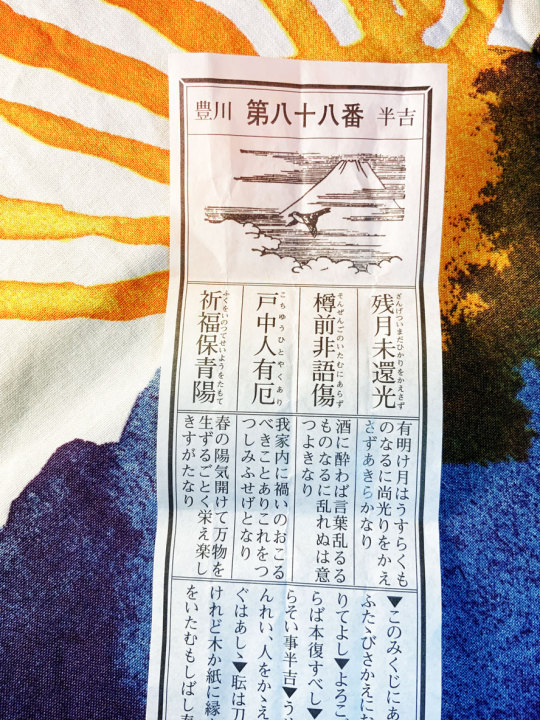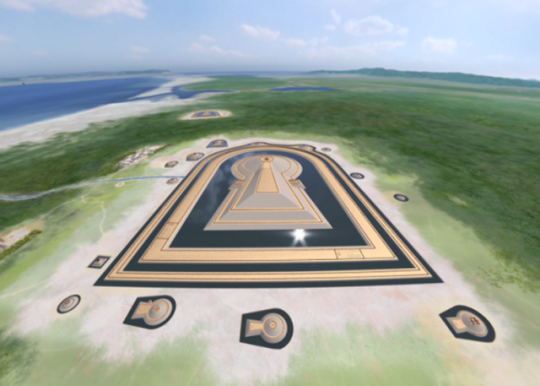#言霊
Explore tagged Tumblr posts
Text

まず読む前に
リラックスしましょう
落ち着く
何もしない
何かをしたくなるのはなぜでしょうか
人は不思議です
他の生き物は感じることはあれど
考えることはあるのでしょうか?
考えとは、先を見据えて起こることのようです
先を見据えてみましょうか
あなたに1秒先のことが分かるでしょうか?
1秒先を考える間に1秒経っている様ですね
これは時間という概念が起こす錯覚です
そもそも
時間は存在しません
今 だけがあるのです
ですから人は今を感じることができます
過去や未来とは言葉はあれども
感じることはできません
過去を感じている錯覚をすることはできます
たとえば思い出すとは
過去の出来事は2度と起こりません
ですが
流れる次元の渦の中で
似ている出来事
が起こる様に見えますね
「あぁ.. また寝過ごした」とか
「あぁ… また間違いをしてしまった」とか
ですが

2度と同じことは起こりません
ただ似ている出来事なのです
常に今は新しく、新鮮で産まされています
あなたが
そう思っているだけ
なのです
間違いや、正しさとは、個性の視点であり
たとえ皆んなが笑顔を作っていても
あなたが悲しい時は悲しく
嬉しい時は嬉しい
みんなでは無く
あなたが決めることです
人に嫌われることをして
喜ぶような地獄の人間もいますが
それはその人にそのまま反射します
この世は鏡
嫌なことには関わってはいけません
もし関われば、そのあなたがまた反映されます
好きなことだけ考えましょう

たとえばドッジボール
向かってくる球に当たれば痛いです
それはアウトになります
そしてあなたが強ければ
球をキャッチして
相手に痛みを返す事ができます
ですがそれは痛みを伴います
避けること、逃げることは良いです
それは強さでもありますが
1人で避けるしかありません
仲間を伴えば、仲間が当たるかもしれませんね
外野はただあなた達が球を投げ合い
痛み合うのを眺め
隙を見て内野に球と共に痛みを投げます
これは気のコミュニケーションでもあり
交友や、社交はヒト特有の遊びです
���くだらないな」と思えば、離れればいい
避ければいいのです
良ければいいのです
悪ければ止してください
0 notes
Text
【サザンオールスターズ】愛の言霊~歌詞の意味を考察!安息な日々は先人たちからの贈り物 | NON SEALD

51 notes
·
View notes
Text
2/23/25 Yuuki Yoda Graduation Concert Day 2 - Kotodamaho (Yuuki Yoda & Shiori Kubo)
#yuuki yoda#yoda yuuki#与田祐希#nogizaka46#乃木坂46#jactress#j-actress#japanese actress#jpop#j-pop#jpop idol#j-pop idol#japanese idol#idol#shiori kubo#kubo shiori#久保史緒里#kotodamaho#言霊砲#performance#live performance
9 notes
·
View notes
Text

鳥山先生のことが頭から離れずにお参りした日に引いたおみくじ 突然こんな日がくるなんて、 こんなにでっかく空いた胸の穴を実感するなんてと、 よろよろ歩きながら、ひいた。 半吉とあるが励ましてくれるような良い(優しい)内容だなと感謝しながら結ぼうとしたときに、挿絵におどろいた こんなことってあるのけ・・・? まさかの鳥と、山の絵、 よく読むと文章に”明”の文字🐦⛰️ 神さまが慰めてくれたとしか思えない 神の愛を、めちゃくちゃ感じたし やっぱり鳥山明は神様なんだとおもった。🐦😇ノ"(っ <。) 思えば88番という数字も、 縁起が良いし無限と∞がふたつある。 鳥山明が永遠に続く気がした ∞∞
鳥山先生、 残りの人生 心臓はとっくに捧げてますが 最大の愛と尊敬と感謝をささげ続けます 最初から最後まで鳥山明だったそういう人生にします 本当に長い間、お疲れさまでした 有難うございました!
#ソッコー社務所へ行き、巫女さんたちに見せたら驚いていた🦊🦊#霊験あらたか豊川稲荷びっくりエピソードのひとつとして語り継いでくださるらしい🙏✨#神様#そういえば、愛知の豊川稲荷様は#神殿(鳥山邸)からとても近いし#鳥山先生ゆかりの地だったのではないか?とふとおもった。狐のお面も、なじみ深いものにしてくれたのは鳥山先生だ…う、ううわああああああああああああああああああん;;#🐦😇✨#おみくじ#伝説のオダイたまゑ様の本を書いた内藤憲吾さん(現実主義者リアリスト)が、神様はおみくじを念写できると言っていた。#マシリトのラジオを聞いて、ドラゴンボールの成功はコインのようで、コインの裏面が鳥山・マシリトコンビで#表面が読んでくれる子供たち(読者)だというようなことを言ってた。半吉というのにも神の意思を感じる…
8 notes
·
View notes
Text
youtube
0 notes
Text
自分が、Aという事物人への囚われで苦しんでいる場合、Aの他にBCDという同列の事物群があり、それらをまとめてEと呼ぶ、というようなことを知る(意識する)ことで、A関連の妄想から解放され、その分楽になる。 大人が子供と同じものに縛られなくなるというような場合の基本的なしくみ。
#知ること#抽象#しくみ#解放#解脱#楽になる#祟り#バチ#迷信#煩悩#執着#妄想#悪霊#敵#ケンカ#対立#葛藤#ジレンマ#パラドックス#言語#文化#文明#メタ認知#相対化#測定#実験#観察#科学#成長#教養
0 notes
Text
欲とカルマ

この世で生きること
欲とは仏教では煩悩であります
魂を煩わせるものでもあり
食欲、性欲、物欲、利欲
なぜ欲があるのでしょうか?
生まれた時の赤子を見ると
何もできない赤子は
泣いて周りに助けを求めます
それがないと生きていけない
母におっぱいをねだり
抱っこをねだり
その様に親に頂いた優しさを得て
人は自分の足で立つことが叶います
そこに人は赤子を可愛がり、愛を持って接するが故に、赤子は大人に成りますね。
ですが
やっと大人に成ったあかつきに
もっともっと大きくなりたい
安心が欲しい、伴侶が欲しい
自由が欲しいと願いを増やし
その願いを叶えるが為に苦労をしたり
悪い人間は他人��騙し、欺いたり
様々な企てや手立てをして叶えんとします
欲とは別に悪いことではありません
どんな生き物も何かを周りから得て
周りに与えることで
地球が一つとして成りえますね

欲しがる必要は本当にあるのか?
与えること
与えるそれは得ることです
得る、貰う、それは自分の足しにするのか
与える、渡す、それは自分から減らすのか
貧しい人は与えることができないのか
与えることができないから貧しいのか
豊かな人は得ることができるのか
得ることができるから豊かなのか
欲とは様々な形をもちますが
実際にはあなたが選んでいるようで
この世から与えられているものです
欲を超越するには
この世に与えることです
あなたが知らないことを知り
未だかつて無かったことを開拓する
あなた自身を通して自分に与えることで
この世はあなたから様々なものを貰う
癒しとは悪いことではありませんが
艱難辛苦を経て得られる事もあるのです
辛さを経て安らぎが何たるかを知る
表だけを見ては、全て、裏は見えません
表も裏も見ることで、全体の形が見えます
無限の豊かさとは

足るを知ること
喜捨
喜んで捨てること、執着をしないこと
この世は一時的にいる場所
おおよそ齢100年を過ぎれば肉体を離れ
その後に霊界へと向かいます
故に執着とは通過点に留まろうとする事であり
高みに向かうことを拒むことでもあります
なにも財布の紐を緩めろという事ではなく
執着は決してしてはならない
それは対人関係であれ
金銭であれ
物資であれ
自分の理想であれ
何が正しく善であり
何が間違いで悪であるのか
どう成りたいか、毎日、襟を正す事
心にどんな想いがあるのか
それは本当に自分の想いなのか
それとも望んでもない気持ちなのか
綺麗に努めれば
自ずと綺麗になっていく
まずは深呼吸して
受け難き人身を得てこの世に在ることを感謝し
瞑想して
内観してみましょう
私はどんな人間なのか?

0 notes
Text
महान् प्रार्थना: परमेश्वरस्य हृदये प्रकाशस्य स्रोतः, सर्वेषां जनानां हृदयेषु प्रकाशः प्रवहतु (तथागत), पृथिव्यां प्रत्यागत्य, ईश्वरस्य इच्छायाः स्पष्टकेन्द्रात्, यत् महान् उद्देश्यः मनुष्यस्य अल्पं इच्छां मार्गदर्शनं करोति, तथागतः महत् प्रयोजनं जानाति तस्य सेवां च करोति, यस्मात्
केन्द्रात् वयं मानवतां, प्रेम्णः च Let the great plan of इति वदामः प्रकाशः शक्तिः च सिद्ध्यताम्।
0 notes
Text
きんようび通信No.706📚
2024年6月28日
▲23日は沖縄慰霊の日でした。記念式典の報道を観ながら母親に教えてもらったのですが、僕の人生初デモ参加は50数年前の沖縄返還を求める地域のデモだったそうです。真新しい黄色のカッパと長靴を着せてもらい、区役所まで喜んで歩いたとのこと。全然覚えていませんでした
▲岸田首相挨拶時に、「沖縄を犠牲にするな」などのヤジがありました。警察官に退場させられてしまいましたが、玉城知事「平和宣言」・高校3年生・仲間さんの「平和の詩」朗読の後の空虚な言葉が許せなかったのだと思います。「私もきっと叫んだわ」と母親も怒っていました
▲同じ日に閉会した国会では、政治資金規正法など様々な悪法が通りました。閣議決定も多くあり、中でも驚いたのはイギリス・イタリアと共同開発する次期戦闘機の第三国への輸出解禁。一昨年の安保3文書改定の具体化ですが、重大な政策変更がまたぞろ国会抜きで行われました
▲先日の沖縄県議選は、残念ながら知事与党が議席を減らす結果となりました。「辺野古基地建設反対の民意は揺るがない」と記者会見で発言がありましたが、同じ思いで出来ることをやっていこうと思いました。戦争しない・させない国をつくるのは、私たちの決意と行動にかかっています
▲さて、東京都知事選投票日まで10日となりました。公営掲示板のポスター掲示を巡る報道に正直ウンザリ。候補者参加の公開討論が多数行われて、都政が抱える問題・今後の施策方向が明瞭になることの方が大事。都政が変われば大きなインパクトになることは間違いありません
平和宣言(令和6年)
2024年度沖縄全戦没者追悼式 平和の詩全文(「児童•生徒の平和メッセージ」詩部門高校の部 最優秀賞)
【今日は何の日📌】
【今週の一句🔖】
酒飲み🍶🍻川柳
カラフルな
傘が通るよ
通学路
【今週の歌🎸】
・Rory Block…Everything Is Broken
本日発売となる「ローリー・ブロック」のボブ・ディラン・トリビュートアルバムから。いつ聴いても渋いギターですね😊
youtube
【今週のグルメ情報😋】
・黒百合…JR金沢駅構内・金沢百番街あんと
能登半島地震支援活動に入る前に立ち寄りました。美味しい出汁のおでんでした😆
#金沢おでん #黒百合

【追記📝】
2024年も半分まで来ましたね。年を重ね節目を迎えるたびに、時間が進む速さを感じますね。誰も避けて通れないことですね😅
#きんようび通信 #沖縄慰霊の日 #平和宣言 #平和の詩#武器輸出 #辺野古基地建設反対 #都知事選
0 notes
Text
【あいみょん】ざらめ~歌詞の意味を考察!言霊が教えるヘキサゴンの“中心” | NON SEALD





428 notes
·
View notes
Text
Japanese Magick

Japanese spirituality and folk magick are deeply rooted in Shinto, Buddhism, and indigenous traditions that blend animism, kami (spirits), and ritual practices. While Japan does not have a historical "witchcraft" tradition in the Western sense, it has a rich magickal heritage that includes onmyodo (esoteric cosmology), shugendo (mountain asceticism), folk magick, and spiritual practices passed down through generations.
So, let's explore the key elements of Japanese witchcraft and magick, including history, deities and spirits, traditional magickal practices, and how modern practitioners integrate these elements into their craft.
Foundations of Japanese Magick
🏮Shinto (神道) – The Way of the Kami
Shinto is the indigenous spiritual tradition of Japan, centered on reverence for kami (divine spirits) found in nature, ancestors, and sacred places. Many Japanese magickal practices stem from Shinto beliefs and rituals.
Key Concepts in Shinto Magick:
• Kami (神) – Spirits or deities that inhabit all things, including trees, mountains, rivers, and animals.
• Purification (禊 Misogi & 祓 Harai) – Cleansing oneself or a space of impurities before engaging in spiritual work.
• Offerings (供え物) – Giving food, incense, or prayers to kami and spirits to seek blessings or protection.
• Omamori (お守り) – Charms that provide luck, protection, and blessings.
🏮Onmyodo (陰陽道) – The Way of Yin-Yang
Onmyodo is an ancient system of esoteric cosmology and divination based on Taoist principles of yin-yang and the five elements. Practitioners, known as onmyōji (陰陽師), were skilled in astrology, geomancy, exorcism, and protective magick.

Onmyodo Magick Includes:
• Divination (卜占) – Fortune-telling using astrology, geomancy, or sacred texts.
• Talismans (護符 Gofu / Ofuda) – Paper or wooden charms inscribed with sacred symbols or prayers for protection.
• Spirit Banishing (鬼払い Oni-barai) – Rituals to remove negative spirits and influences.
• Elemental Magic (五行 Gogyō) – The Five Elements (Wood, Fire, Earth, Metal, Water) used for balance and spellwork.
🏮Shugendo (修験道) – Mountain Asceticism
Shugendo is a mystical tradition that blends Shinto, Buddhism, and Taoism. Its practitioners, known as yamabushi (山伏), are mountain monks who engage in spiritual endurance training, chanting, and nature-based magick.
Shugendo Magical Practices:
• Nature-Based Rituals – Using waterfalls, mountains, and caves for spiritual cleansing and empowerment.
• Firewalking (火渡り Hi-watari) – Walking over fire as a purification ritual.
• Mantra Chanting (真言 Shingon) – Reciting sacred phrases to invoke deities and spirits.
Key Deities and Spirits in Japanese Witchcraft
🏮Major Kami Associated with Magick:
• Inari Okami (稲荷大神) – Kami of prosperity, agriculture, and fox spirits (kitsune). Often invoked for abundance and transformation magick.
• Tsukuyomi (月読命) – Moon deity, associated with night magick, divination, and intuition.
• Ame-no-Uzume (天宇受売命) – Goddess of dawn, joy, and ritual dance. Invoked for creativity and uplifting energy.
• Raijin & Fujin (雷神・風神) – Thunder and wind gods, called upon for storm magick and elemental work.
• Susanoo-no-Mikoto (須佐之男命) – Kami of storms, exorcism, and warrior energy.

🏮Yokai (妖怪) & Spirit Beings:
Japanese folklore is filled with supernatural creatures, some of which play a role in magick:
• Kitsune (狐) – Fox spirits associated with transformation, illusion, and trickery.
• Tengu (天狗) – Mountain spirits and warriors with powerful knowledge of magick and martial arts.
• Yurei (幽霊) – Ghosts and ancestral spirits that may require appeasement or exorcism.
Traditional Japanese Magickal Practices
🏮Divination & Fortune-Telling:
• Omikuji (おみくじ) – Paper fortunes drawn at shrines to reveal one's luck.
• I Ching (易経 Ekikyō) – Taoist divination practice adopted in Japan.
• Tenmon (天文) – Japanese astrology, used by onmyōji for predicting fate and auspicious times.
🏮Talisman & Charm Magick:
• Omamori (お守り) – Protective charms bought from shrines, charged with blessings from kami.
• Ofuda (御札) – Paper talismans often hung in homes for protection.
• Shide (紙垂) – Zigzag-shaped paper strips used in purification and shrine rituals.
🏮Protection & Banishing Spells
• Salt Purification (塩清め Shio-kiyome) – Sprinkling salt around spaces to remove negativity.
• Oni-barai (鬼払い) – Banishing rituals to drive away malevolent spirits.
• Suzu (鈴) – Small bells used to ward off bad spirits.

🏮Elemental & Nature Magick
• Waterfall Purification (滝行 Takigyo) – Ritual bathing in waterfalls to cleanse the spirit.
• Moon Rituals (月の魔法 Tsuki no Maho) – Working with lunar phases for manifestation and divination.
• Kitsune Magick – Calling upon fox spirits for wisdom, transformation, and trickster energy.
Modern Japanese Witchcraft & Contemporary Practices
While Japan does not have a strong tradition of "witchcraft" as seen in the West, modern witches and spiritual practitioners integrate traditional elements into their craft.
🏮Ways to Practice Japanese-Inspired Magick Today:
• Shrine Visits – Offering prayers and petitions to kami.
• Japanese Herbal Magick – Using plants like mugwort (ヨモギ yomogi) for protection and cleansing.
• Tea Rituals – Preparing and blessing tea with intentions for peace, health, and wisdom.
• Shinto-Inspired Spellwork – Creating small home altars (kamidana) for divine guidance.
• Combining Onmyodo with Western Practices – Blending astrology, talisman magic, and elemental balancing with modern witchcraft.
Japanese magick is deeply connected to nature, spirits, and ancestral traditions. While Japan does not have a direct equivalent to Western witchcraft, its spiritual and folk practices offer rich ways to work with energy, divination, and protection magick. Whether you are drawn to Shinto nature worship, onmyodo divination, or spirit work with yokai, Japanese magickal traditions provide a fascinating and profound path for spiritual exploration.

#japan#japanese#japanese mythology#shinto#Kami#onmyodo#kitsune#Oni#tsukuyomi#witch#magick#witchcraft#demons#witchblr#witch community#eclectic witch#eclectic#pagan#spellwork#divination#protection magic#talisman#charms#spirit#nature spirits#exorcism#protection#i ching#culture#Religion
106 notes
·
View notes
Text
WTDSIK Incorrect Quotes#55 BET-
Furfur: Will you date me? Breathe if yes, and recite the Bible in Japanese if no~
Y/n: 初めに、神は天と地を創造されました。
Furfur: What the…?
Y/n: 地球は形もなく虚無であり、暗闇が深海の面を覆いました…
Furfur: Is that actually the Bible?!
Y/n: …そして神の霊が水��の上に浮かんでいました。
Furfur: And you stopped breathing, too?!
Y/n: そして神は「光あれ」と言われました。
Furfur: Devi, it would have been preferable for you to just have beaten me up and cursed me out!

#welcome to demon school iruma kun#welcome to demon school iruma kun x reader#wtdsik#mairimashita! iruma kun#mairimashita! iruma kun x reader#general furfur#wtdsik x reader#wtdsik x y/n#furfur x reader#furfur x y/n#general furfur x reader#wtdsik incorrect quotes#m!ik#m!ik x reader#m!ik x y/n#m!ik incorrect quotes#incorrect quotes
183 notes
·
View notes
Text
言霊 (koto-dama) “word-spirit”

Koto-dama 言霊 is a traditional belief that mystical powers dwell in words and names.
Just like martial arts practitioners giving out a shout when they make a strike (“ki-ai!” - literally “meeting of spirit”) it is believed that sounds can affect our body, mind and soul.
#japanese language#japan#japanese culture#japanese#書道#japanese calligraphy#calligraphy#japanese art#kanji#japanese langblr
91 notes
·
View notes
Text






KOFUN: DAISENRYO
Welcome to a new installment of Japanese culture and history, in this case we are going to talk about Daisen Kofun, also known as the tomb of Emperor Nintoku, which is located in Osaka-fu, in the city of Sakai, so make yourselves comfortable and let's get started.
First of all we have to explain what it is and what it means, what it was used for, among other questions.
The word Kofun, is composed of two kanji 古墳 and in furigana (こふん) which translates literally as ancient tomb although I like to translate it as burial mound, there are 160. 000 throughout Japan, a vast majority are under the control of the Japanese imperial house, also noteworthy for the same reason mentioned above, can not be excavated unless something very exceptional happens with is the case of this publication, but it is not the only one but as I say are exceptions, but yes they have been able to make a laser scan, ie a mapping but their studies are limited. Unless it is one that is not under the imperial hand, of which there are some and of which it has been possible to study them in depth.
These burial mounds, some of them are cenotaphs, which means that there is no one buried, it is a tomb that is made in honour or in memory of an important personage even if his body is not found, as such, and their chronology goes from 250 AD to 629, as some were attempted to be built during the 7th century AD but they were already in decadence, in a progressive way.
But the Daisen Kofun dates from the 3rd century A.D. Recent studies question whether it belongs to Emperor Nintoku, as has traditionally been said, since in the 20th century the figure of the emperor could not be questioned, due to imperialist and nationalist issues. Who is buried there then? Possibly, a chief or a chieftain was buried, what is clear is that he is someone important since he was able to gather a lot of manpower for its realisation. Does it have any relation with the Yamatai kingdom? We don't know, I would say yes, but I leave it as a possible hypothesis.
What are its characteristics? 486 metres, 305 metres wide and 33 metres high, a total of 41 hectares rounded off. In the 80‘s and 90’s Haniwa statues of horses and human figures among other materials were discovered because there was a landslide on one of its sides and it was necessary to intervene, but as I say only if there are particular problems.
I hope you liked it and I will see you in future publications. Have a nice week.
-
今回は、大阪府堺市にある仁徳天皇陵として知られる大山古墳についてお話しします。
まず、古墳とは何なのか、どういう意味なのか、何に使われていたのか、などを説明しなければならない。
古墳という言葉は、漢字の古墳とふりがなのこふんからなり、直訳すると古墳だが、私は古墳と訳したい。 その大部分は皇室の管理下にあり、前述したのと同じ理由で、非常に例外的なことが起こらない限り発掘することはできない。帝政下にないものであれば別だが、いくつかあり、深く研究することが可能である。
これらの古墳のいくつかは慰霊碑である。つまり、誰も埋葬されておらず、たとえ遺体が見つからなくても、重要な人物を讃えたり偲んだりするために作られた墓である。
しかし、大山古墳は紀元3世紀のものである。最近の研究では、伝統的に言われてきたように、それが仁徳天皇のものであるかどうかが疑問視されている。 20世紀には、帝国主義やナショナリズムの問題から、天皇の姿を疑問視することはできなかったからである。 では、そこに埋葬されているのは誰なのか?おそらく、首長か酋長が埋葬されたのだろうが、はっきりしているのは、彼がその実現のために多くの人手を集めることができたので、重要な人物であるということだ。 邪馬台国と何か関係があるのだろうか?わからないが、可能性のある仮説として残しておく。
その特徴は?全長486メートル、幅305メートル、高さ33メートル、四捨五入して41ヘクタール。80年代から90年代にかけて、埴輪の馬の像や人物の像などが発見された。
それでは、また次号でお会いしましょう。 良い一週間を。
-
Sean bienvenidos a una nueva entrega de cultura e historia japonesa, en este caso vamos a hablar sobre, Daisen Kofun, también conocido como, la tumba del emperador Nintoku. Se localiza, en Osaka-fu, en la ciudad de Sakai. Una vez dicho esto, pónganse cómodos que empezamos.
-
Antes que nada hay que explicar, ¿qué es? Y ¿Qué significa? ¿Para qué servían? Entre otras preguntas.
La, palabra Kofun, está compuesta por dos kanjis 古墳 y en furigana (こふん) que se traduce literalmente, como tumba antigua aunque me gusta más traducirlo como túmulo funerario, hay 160.000 en todo Japón, una gran inmensa mayoría está bajo control de la casa imperial japonesa, además cabe destacar por la misma razón antes mencionada, no se pueden excavar a no ser que pase algo muy excepcional como, es el caso de esta publicación, pero no es el único, pero como digo son excepciones, pero sí que se les ha podido hacer un escaneo láser, es decir un mapeo, pero sus estudios son limitados. A no ser, que sea uno que no esté bajo la mano imperial, que hay algunos y de los cuales se han podido estudiar en profundidad.
-
Dichos túmulos, funerarios algunos de ellos son cenotafios, esto quiere decir que no hay nadie enterrado es una tumba que se hace en honor o en memoria de un personaje importante aunque no se encuentre su cuerpo, como tal y su cronología van desde el 250 d.C/ 629 d.C porque algunos se intentaron construir a lo largo del siglo, VII d.C, pero ya estaban en decadencia, de forma progresiva.
-
Pero el Daisen Kofun, data del siglo III d.C recientes estudios, ponen en tela de juicio que sea del emperador Nintoku, como se ha dicho tradicionalmente, ya que en el siglo XX no se podía cuestionar la figura del emperador, por cuestiones imperialistas y nacionalistas. ¿Quién está enterrado entonces? Posiblemente, se enterró a un jefe o a un cacique. Lo que está claro es que es alguien importante, ya que pudo reunir mucha mano de obra para su realización. ¿Tiene alguna relación con el reino de Yamatai? No lo sabemos, yo diría que sí, pero lo dejo como posible hipótesis.
-
¿Cuáles son sus características? 486 metros, 305 de ancho y 33 metros de altura, un total de 41 hectáreas redondeadas. En la década de los 80 y 90 se descubren estatuas de Haniwa de caballos y de figuras humanas, entre otros materiales, ya que hubo un desprendimiento en uno de sus laterales y hubo que intervenir, pero como digo solo si se dan problemas en particular.
-
Espero que os haya gustado y nos vemos en próximas publicaciones que pasen una buena semana.
#日本#歴史#ユネスコ#unesco#history#japan#考古学#art#archaeology#geography#osaka#culture#japaneseculture#arthistory#artists on tumblr#original artists on tumblr#kofun#kofunperiod#古墳#古墳時代#大阪府#治療#芸術
73 notes
·
View notes